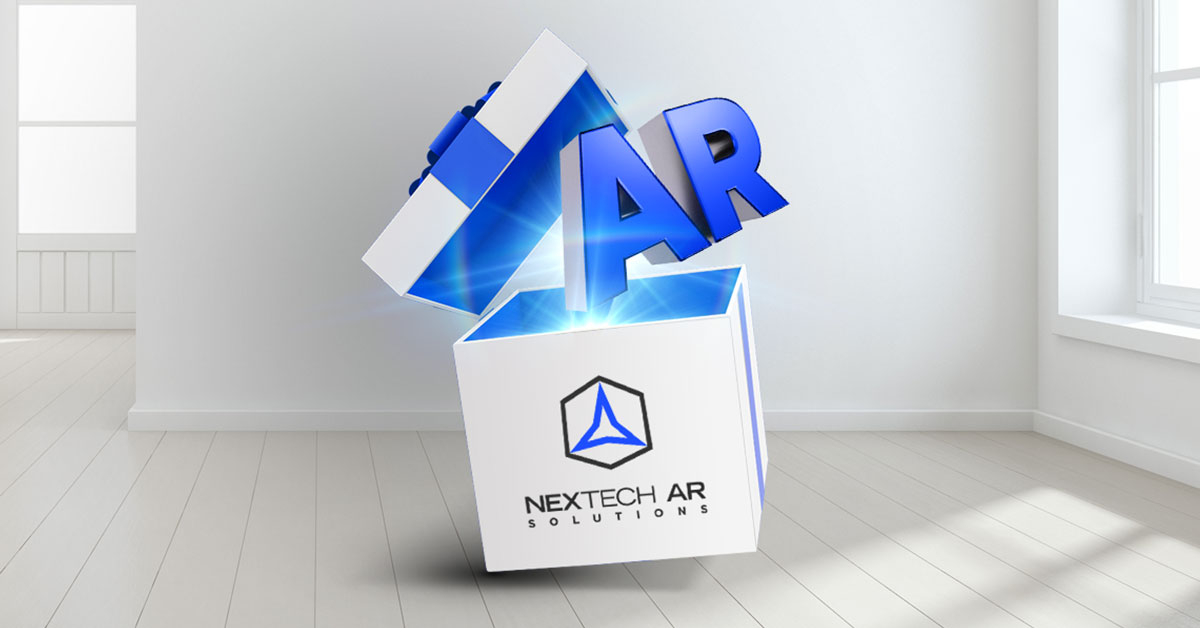There are many ways to enhance the shopping experience, and Augmented Reality is definitely one of them. We're looking at how to use AR to drive more sales to your ecommerce store this holiday season.
Black Friday and Cyber Monday are just around the corner. Many people have already begun ticking items off of their Christmas shopping lists. And let's not forget we're in the middle of the global pandemic with social distancing rules and public space restrictions still in place.
This can only mean one thing: most of the shopping will be conducted online this holiday season.
According to Deloitte’s annual holiday retail forecast, e-commerce sales are expected to generate between $182 billion and $196 billion in Q4 2020. That's quite the jump from $137.6 billion in 2019.
No doubt ecommerce stores have long planned their Black Friday/Cyber Monday and Christmas campaigns to meet the online demand and capture more sales. After all, it's the busiest time of the year that accounts for a significant portion of their annual revenue.
But persuasive marketing campaigns are not enough to acquire holiday shoppers and then, to retain them in the future. Consumers today want their entire buyer's journey to be frictionless and exciting, from discovering a brand on social media to receiving an order confirmation email.
Let's look at the various ways to use AR to drive more sales and enhance the customer shopping experience this holiday season.
Augmented Reality provides information employees can't
The biggest challenge of shopping online is that customers can't experience the product in-person like they would in a physical store. The result? The average conversion rate for e-commerce stores is 3% vs anywhere between 20%-40% in brick-and-mortar shops.
Augmented Reality helps overcome this barrier, enabling users to interact with the product similarly as to how they would in-store by leveraging 3D modelling. Customers can virtually pick up the item, zoom in on its features and view it from every angle.
However, that's not the end of it. Imagine you're looking to buy a dining table. Of course, stability and construction are important factors to consider before the purchase. Still, it would be helpful to see how it looks in your dining room, together with the room decor and other furniture.
Well, Augmented Reality solutions for e-commerce allow you to do just that. Products in 3D/AR can be virtually projected into a real-world home environment via smartphone or a tablet, allowing users to better understand whether the dining table suits their home or not.
Being able to experience the product in AR also provides customers with a sense of security that their purchase won't be full of surprises when it's delivered and strengthens their confidence in the product being the right choice for them.
Augmented Reality enhances customer experience
Long gone are the days when consumers were driven by nothing more than "getting their money's worth". Granted, the price factor continues to largely influence the purchasing decision though brands need to take notice of the growing demand for truly exceptional customer experience (CX). What does this mean?
Essentially, people want to feel valued and involved. They seek appreciation for their contributions, rewarded with more than discounts and offers but rather with a deeper emotional brand-to-customer connection. In other words, they want that warm fuzzy feeling when buying in your store.
Augmented Reality helps transform shopping from a mere value exchange into engaging experience consumers thoroughly enjoy by gamifying the purchase process. You've got to admit yourself that viewing an item in 3D/AR even sounds more captivating, especially when you compare it to the standard product photography.
What's more, enabling users to test and interact with the product before proceeding to checkout empowers faster decision making (because they can see what they're getting immediately) and in turn, lower return rates. Which is a win-win for you, the e-commerce owner and customers as they don't have to go to the trouble of returning the item.
Augmented Reality boosts sales
61% of shoppers prefer stores which offer augmented reality experiences according to research fromRetail Perceptions. 71% claim they would return more often. Why is that?
As previously mentioned, Augmented Reality in e-commerce increases buyers confidence in the item they're about to purchase. By setting realistic product expectations, any potential doubts that could prevent the user from completing the order, such as uncertainty whether or not the item is exactly what they need/want, are removed. The result? Higher conversion rates.
It's also important to consider why people buy. We like to think we buy for rational reasons but the reality is, we buy on emotions and then justify it with logic. Due to its immersive nature, AR is a great medium to elicit positive emotions, such as joy and surprise, which could lead to purchase.
Furthermore, interacting with the product in the home environment creates a certain emotional attachment which can also influence the purchasing decision - customers experiencing an item through Augmented Reality often feel as if they already own it. And if you're ever taken a test drive in a car you really like, you know how difficult it is to walk away and not buy it.
In essence, evoking that feeling of product ownership means customers are more likely to go ahead with the purchase.
Final thoughts
It is said that there are 12 million – 24 million e-commerce sites across the world with more popping up every single day. And although online shopping has escalated this year due to COVID crisis and will only grow further during this holiday season, no customers are given - they all have to be earned.
That's where Augmented Reality for e-commerce can help. While paid traffic ensures new website visitors, AR takes care of compelling them to convert by enhancing customer experience, boosting product confidence and removing doubts. Not being able to experience products in-person will no longer prevent people from buying as they can now examine items virtually.
And with only 1% of retailers currently using Augmented Reality, it's an excellent opportunity to get ahead of your competitors and increase your chances of retaining first-time holiday shoppers.
Interested in finding out more about our e-commerce Augmented Reality solutions? Get in touch to schedule your free demo.







